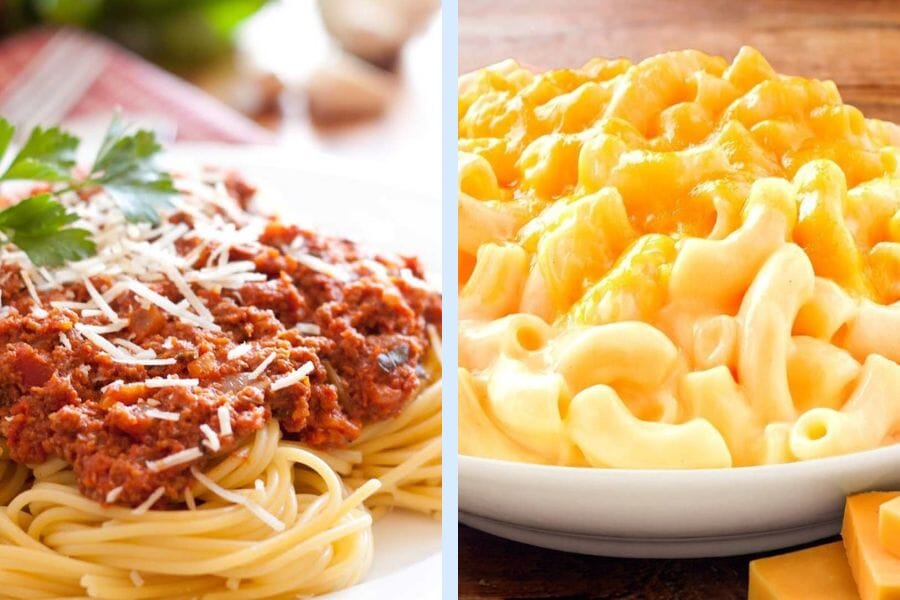The widely-loved Bolognese sauce is one of the few foods in the culinary world that causes as much controversy as it does enthusiasm. With its rich taste and soothing charm, Bolognese sauce has made its way around the globe from its origins in the heart of Italy. But it changed and adapted to American tastes as it strayed from its Italian origins.
In this culinary competition, we compare and contrast the American version of Bolognese with its Italian counterpart, exploring the interesting distinctions between the two. Come along as we savour each version and investigate its cultural relevance, history, ingredients, and preparation techniques.
Origins and Heritage
Italian Bolognese: A Taste of Tradition From Burrata House
Ragù alla Bolognese, a type of Italian Bolognese, is a speciality of Bologna, the Italian culinary capital. Invented in the late 18th century, the first recorded recipe traces its origins back hundreds of years. Rooted in tradition and passed down through generations, this savoury masterpiece exemplifies Italian cuisine at its finest. The Bolognese sauce is a family secret the Italians hold in the highest regard; its creators take great pride in it.
American Bolognese: An Evolution Abroad
Over the years Bolognese has changed drastically. It became more representative of American cuisine as it mixed with other cuisines and became more tailored to regional preferences as it is done at the best Italian restaurant in Los Angeles. American Bolognese exemplifies the boundless originality of American cuisine, resulting from the country’s melting pot of cultures.
Ingredients
Italian Bolognese: Simple Elegance
The classic Bolognese sauce, which has roots in Italy, is characterised by a simple yet exquisite blend of ingredients. Grounded beef, pork, or a combination of the two takes centre stage, accompanied by savoury veggies like celery, onions, and carrots cooked to a perfect texture. A dash of milk for richness, a big splash of red wine for complexity, and a little trace of nutmeg for warming. Traditional tagliatelle is tossed with this classic sauce, completed with canned tomatoes stewed for hours.
American Bolognese: A Fusion of Flavors
On the other hand, American Bolognese from Burrata House is known for its varied style. Although ground beef is still essential, additional proteins such as ground turkey or sausage are frequently welcomed. As the vegetable medley grows, it gains more texture and flavour with the addition of bell peppers and mushrooms. Beef broth or even a pinch of Worcestershire sauce can be used instead of wine in specific recipes. More herbs and spices are used, giving it a more robust, more nuanced flavour. This rich sauce is often served with linguine or spaghetti.
Preparation: Traditional vs. Modern, Easy, and Fast
An Expression of Devotion: Italian Bolognese
Making authentic Italian Bolognese pasta requires time, effort, and perseverance. The flavours of the meat and veggies can combine and become more robust after hours of low simmering. A tribute to the Italian dedication to culinary perfection, this sauce results from a slow-cooked method that is second to none.
A Delight for Busy Cooks: American Bolognese
Comparatively, American Bolognese provides a quicker alternative. Many people choose faster recipes that offer an excellent supper due to the busy nature of modern living. With a preparation time of less than an hour, American Bolognese is a superb option for families on the go. These tastes are a great middle-ground for people who are short on time but want a satisfying meal.
Cultural Significance
Italian Bolognese: A Family Tradition
More than just a dish, Bolognese sauce represents the bond between Italian families. In the kitchen, loved ones gather to share recipes and cooking methods passed down over the years. Serving Italian Bolognese at a celebration or a family reunion brings back fond memories and brings everyone closer.
American Bolognese: Versatility and Innovation
The American Bolognese is all about being flexible and new. Pasta, pizza, hot dogs, and nachos are just a few dishes featuring this American home staple. The versatility of flavours has made it a much-loved part of American cuisine like it’s made at Burrata House.
Conclusion
The fact that American Bolognese is different from Italian Bolognese demonstrates how culinary traditions evolve. The American Bolognese from Burrata House breed honours innovation and flexibility, unlike the classic Italian Bolognese that represents tradition and ageless grace. This traditional sauce is delicious in its Americanized, robust taste profile or Italian-style, slow-simmered perfection.
Read More:How is Italian Pasta Different from American Pasta?
Frequently Asked Questions
Q1: What is the distinction between traditional and American Bolognese?
A1: While some of the ingredients in bolognese are similar to those in American-style spaghetti meat sauce, authentic bolognese is thicker, has milk added (which is delicious), and uses far less tomato.
Q2: What country created bolognese?
A2: Bolognese sauce is a tomato-based meat sauce for pasta named after the Italian city of Bologna, located in a fertile agricultural zone.
Q3: What makes American Italian food unique?
A3: In response to this increased wealth, Italian-American food has two distinct characteristics: it stresses using “rich ingredients” (meat, cheese, and eggs) compared to its Italian peasant equivalent while retaining the simple-to-prepare approach typical of poor people’s meals.

